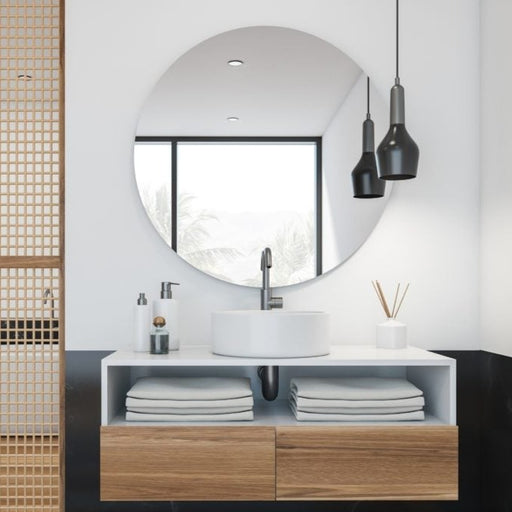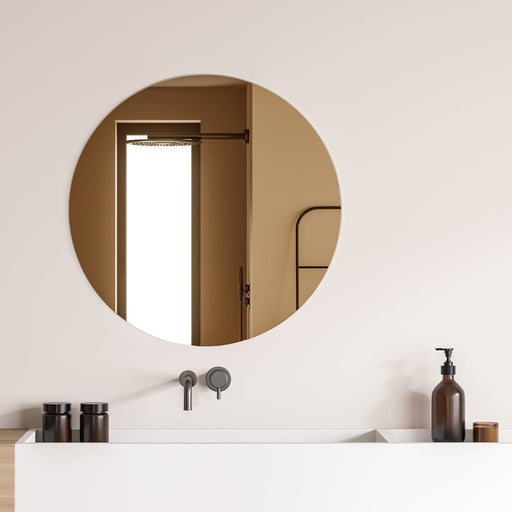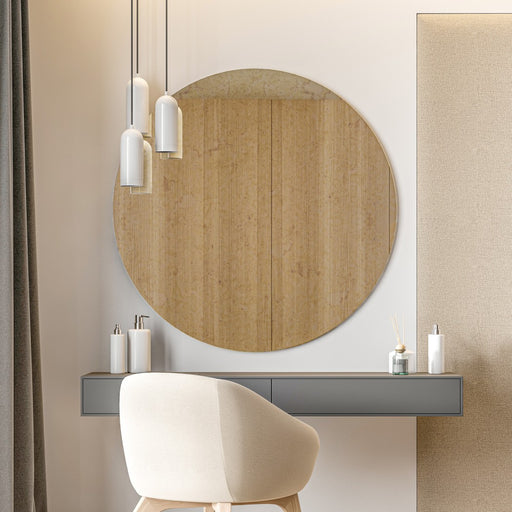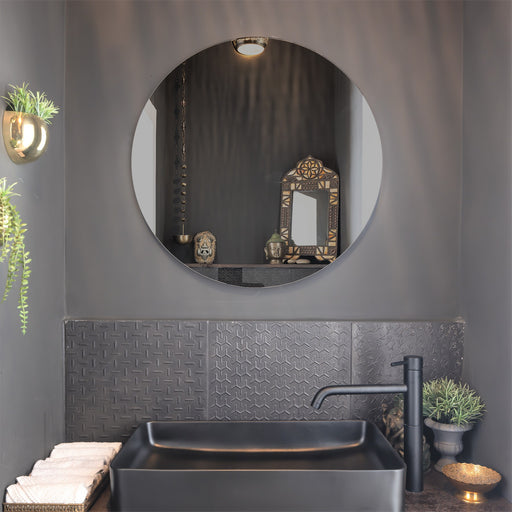Round Mirror FAQs
Hanging a round mirror on the wall can be beneficial for any space, as it adds a focal point of visual interest. In rooms where most furniture will be rectangular, such as bedrooms and living rooms, the round shape can introduce a contrast that breaks up the hard lines with softer angles.
This less demanding shape is also a space-saver, as it takes up less room on the wall, and can fit into smaller areas more easily than a square or rectangular mirror could. A relatively compact round mirror can make the space feel more harmonious and welcoming, with fewer sharp edges.
Both elegant and modern, functional yet discreet, a frameless round mirror is the perfect option for adding some character to a minimalist setting. Alternatively, if you want to add your own frame, you can use it as a base for a unique style or trendy design, like a porthole mirror.
The two most popular mirror shapes are rectangular and circular, which are both available in a range of sizes and finishes, and can either be left frameless or embellished with a variety of frame styles.
Each can fit into most interior design styles without a problem – but in some cases, one might be a better fit than the other. Choosing the best mirror shape depends on how you intend to use it, the layout and décor scheme of the room you want to place it in, and your personal style preferences.
For example, round mirrors are great to go above sinks in bathrooms or vanity tables in bedrooms, where you can look closely at your face – while rectangular ones are generally larger, and often more suitable for dressing areas, as you can see your whole body in the mirror.
The shape and size of the wall space available is a major factor in determining whether a rectangle or round mirror will look good there.
Rectangular versions are better suited to long and narrow wall spaces, as they can fill up more of the area to create a dramatic yet balanced look. Meanwhile, round mirrors are excellent for areas with limited wall space, including hallways, as they help to create the illusion of more space without taking up too much room themselves.
Possibly the most common placement for round mirrors is above a bathroom sink or above a dressing table as a vanity mirror. This is because they’re perfect for clearly seeing your face and upper body while brushing teeth, shaving, applying skincare products or cosmetics, and so on.
However, circular mirrors can be hung in any room to occupy empty wall space and enhance the light levels and ambience, including lounge areas, bedrooms, entryways, hallways, and more.
Whether it’s behind a desk in a home office, over a mantlepiece in the living room, or above a console table in the hall, the key is to position your round mirror with what it will reflect in mind.
You’ll need the mirror to be accessible when you want to use it to see your own reflection, but you should also make sure that it reflects something you would want to see when you aren’t using it.
For example – the reflection of a window or a house plant can be visually pleasing, and even the reflection of a lamp or a blank stretch of white wall can boost the space’s brightness level.





